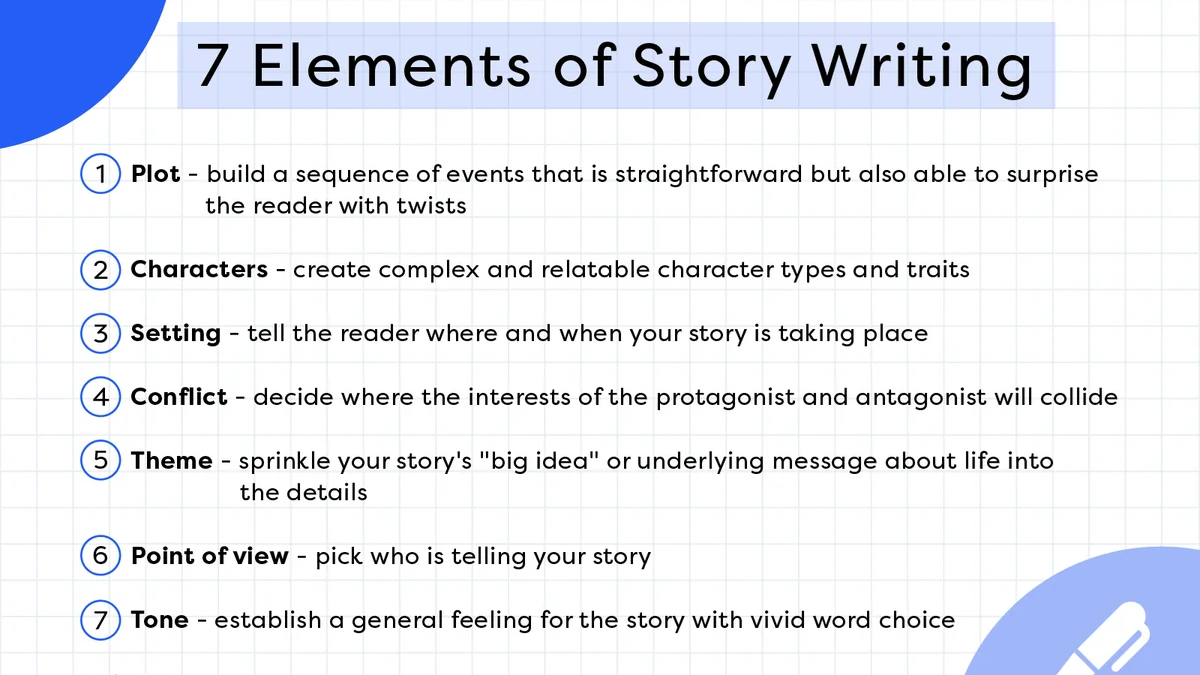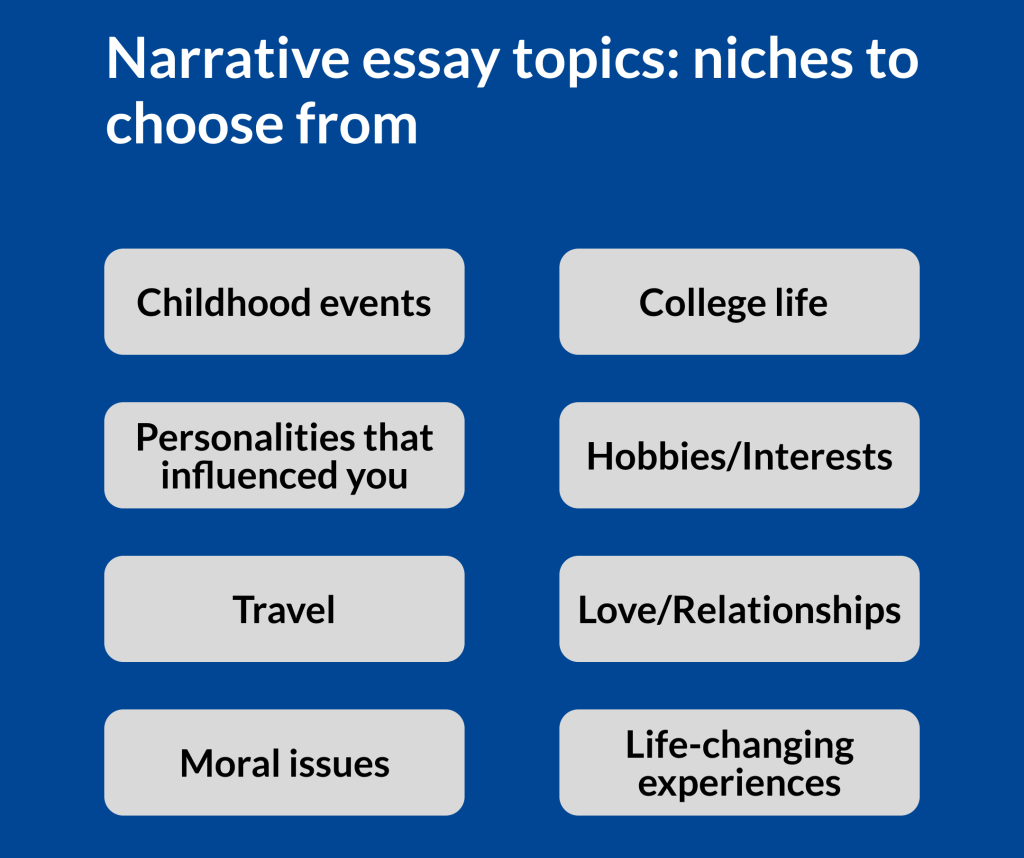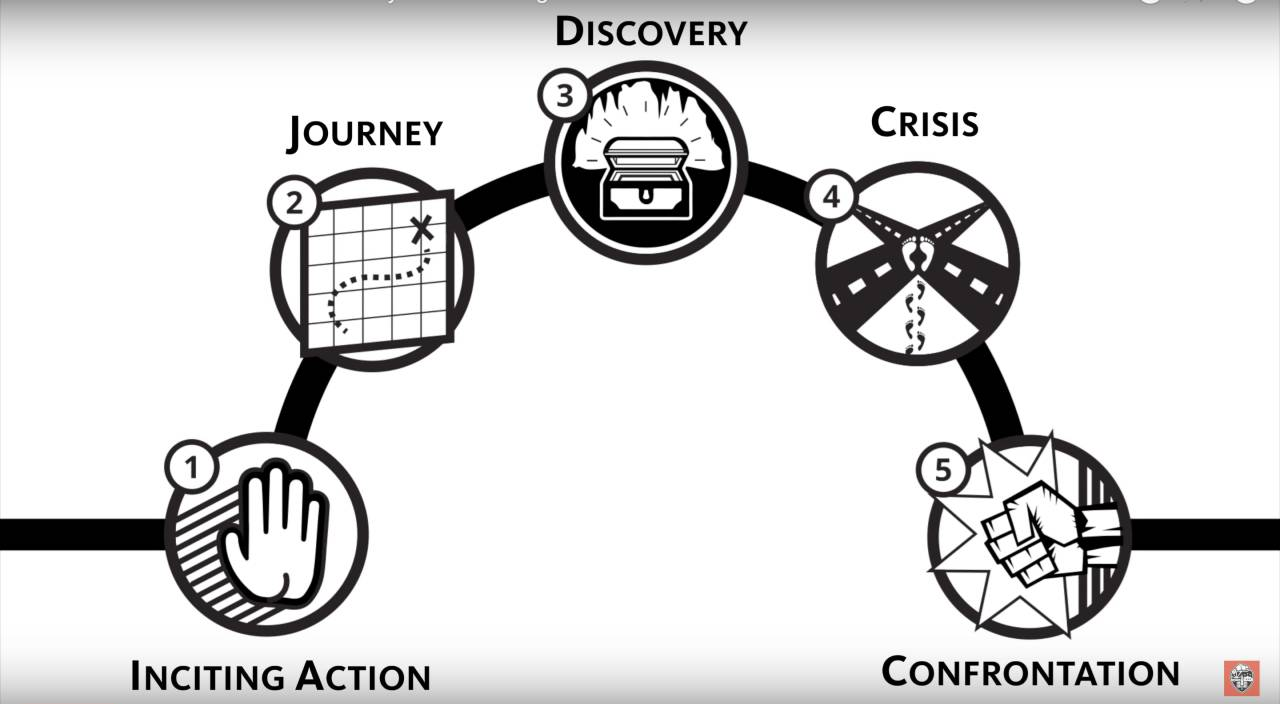Have you ever gotten lost in a good story, whether it’s a book, a movie, or even a conversation? That’s the magic of narrative writing!
But what exactly is narrative writing?
It’s more than just putting words on a page; it’s about crafting a tale that draws readers in and takes them on a journey.
In this post, we’ll explore the elements that make narrative writing so captivating, from character development to plot twists, and why it’s an essential skill for any writer.
Let’s dive into the world of storytelling!
Table Of Contents:
- What is Narrative Writing?
- Key Elements of Narrative Writing
- How to Write a Narrative Essay
- Examples of Narrative Writing
- Share Your Story With Narrative Writing
What is Narrative Writing?
When we talk about narrative writing, we’re diving into the art of storytelling.
Think about your favorite books or films—what draws you in? It’s the way the story unfolds, the characters that leap off the page, and the emotions that resonate long after the last chapter.
Narrative writing is all about crafting a compelling tale that connects with readers on a deeper level.
At its core, narrative writing combines elements like plot, character, and setting to create a cohesive story. Whether you’re recounting a personal experience, spinning a fictional tale, or even sharing a historical event, the goal remains the same: to engage your audience and transport them to another world.
Types of Narrative Writing
Narrative writing isn’t a one-size-fits-all kind of deal. In fact, there are several distinct types, each with its own flavor and purpose.
Let’s explore some of the most common types of narrative writing:
- Fictional Narratives: This is where imagination runs wild! Fictional narratives include novels, short stories, and novellas. They might take you on a journey through fantastical worlds, complex characters, or gripping plot twists. The beauty of fiction is that anything is possible, and writers have the freedom to create entirely new realities.
- Non-Fictional Narratives: These narratives tell real-life stories. Think memoirs, autobiographies, or personal essays. Non-fictional narratives allow writers to share their experiences, insights, and reflections, giving readers a glimpse into someone else’s life or perspective. They’re a powerful way to connect and inspire through authenticity.
- Descriptive Narratives: Here, the focus is on painting a vivid picture with words. Descriptive narratives often emphasize sensory details, immersing readers in a specific moment or scene. Whether it’s a bustling city street or a tranquil forest, descriptive narratives help transport readers to that place, making them feel like they’re right there with the characters.
- Reflective Narratives: This type of narrative invites introspection. Writers share their thoughts and feelings about a particular experience or event, often highlighting the lessons learned. Reflective narratives can resonate deeply, as they encourage readers to think about their own experiences and what they might take away from them.
- Historical Narratives: These narratives tell stories from the past, often weaving together factual events with storytelling elements. They can take the form of historical fiction or non-fiction accounts that make history come alive. Historical narratives provide context and insight, allowing readers to better understand the past.
- Dialogue Narratives: In this style, the story unfolds primarily through conversation. Dialogue narratives can be a powerful way to reveal character traits, relationships, and plot progression. They often feel dynamic and engaging, making readers feel as though they’re eavesdropping on a compelling conversation.
Each type of narrative writing has its own unique strengths and can be used to convey different messages or evoke various emotions. As you explore the world of narrative writing, consider which type resonates with you the most and how you can incorporate those elements into your own storytelling!
Key Elements of Narrative Writing
Now that we’ve explored the different types of narrative writing, let’s dive into the key elements that make up a compelling narrative. Understanding these components can help you craft stories that captivate your readers and keep them turning the pages.
Here are the essential elements to consider:
- Plot: The plot is the backbone of your narrative. It’s the sequence of events that unfolds throughout the story, typically structured around a central conflict or goal. A well-developed plot usually follows a classic arc, including exposition (introduction of characters and setting), rising action (development of the conflict), climax (the turning point), falling action, and resolution (the conclusion). A strong plot keeps readers engaged and eager to see what happens next!
- Characters: Characters are the heart and soul of your narrative. They’re the individuals who drive the story forward and engage readers emotionally. Well-rounded characters have distinct personalities, motivations, and conflicts. The protagonist (main character) often faces challenges that lead to growth and change, while antagonists (opposing forces) create tension and conflict. Readers connect with relatable characters, so be sure to develop them thoughtfully!
- Setting: The setting is the backdrop for your story. It includes the time and place where the narrative unfolds, creating context for the characters and events. A richly described setting can evoke mood and atmosphere, making your story feel more immersive. Whether it’s a bustling city, a quiet village, or a distant galaxy, the setting should complement and enhance the overall narrative.
- Conflict: Conflict is what drives the plot and gives your story tension. It can be internal (within a character) or external (between characters or forces). Conflict creates obstacles that characters must overcome, leading to growth and resolution. Without conflict, stories can feel flat and unengaging, so think about the challenges your characters will face and how they’ll navigate them.
- Point of View: The point of view determines who tells the story and how much the reader knows about the character’s thoughts and feelings. Common perspectives include first-person (using “I”), second-person (using “you”), and third-person (using “he,” “she,” or “they”). The choice of point of view can significantly impact the reader’s experience and connection to the narrative, so choose wisely!
- Theme: The theme is the underlying message or central idea of your narrative. It’s what you want readers to take away from the story. Themes can range from love and friendship to loss and redemption. A strong theme adds depth to your narrative and encourages readers to reflect on their own experiences and beliefs.
- Tone: Tone refers to the attitude or mood conveyed through your narrative. It can be formal, informal, serious, playful, or anything in between. The tone sets the emotional backdrop for your story and influences how readers perceive the characters and events. A consistent tone helps maintain the overall feel of your narrative, making it more cohesive and engaging.
By weaving together these key elements, you can create a narrative that resonates with readers, drawing them into your story and leaving a lasting impression. So, as you write, keep these components in mind to ensure your narrative is engaging and memorable!

How to Write a Narrative Essay
Writing a narrative essay can be a fulfilling way to express yourself and share your experiences. Whether you’re recounting a significant moment from your life or spinning a fictional tale, following these steps can help you craft a compelling narrative essay.
Let me break down the steps:
Step 1: Choose a Topic
Start by selecting a topic that resonates with you. It could be a personal experience, a lesson learned, or even a fictional scenario. The key is to choose something that you’re passionate about, as your enthusiasm will shine through in your writing.

Step 2: Define Your Purpose
What do you want your readers to take away from your essay? Are you aiming to entertain, inform, or inspire? Clarifying your purpose will help guide your writing and ensure your narrative stays focused and impactful.
Step 3: Outline Your Story
Before diving into writing, create an outline to organize your thoughts. Identify the key elements of your narrative, including the plot, characters, setting, and conflict. This will serve as a roadmap, helping you maintain a clear structure as you write.
Step 4: Craft an Engaging Hook
Start your essay with a captivating opening that draws readers in. You could begin with a vivid description, a thought-provoking question, or an intriguing statement. A strong hook sets the tone for your narrative and entices readers to continue.
Step 5: Develop Your Characters
If your narrative includes characters, take time to flesh them out. Describe their personalities, motivations, and conflicts. Consider how they relate to the central theme of your essay and how their experiences contribute to the overall story.
Step 6: Set the Scene
Use descriptive language to establish the setting of your narrative. Create a vivid picture in your readers’ minds by incorporating sensory details—what do they see, hear, smell, and feel? A well-crafted setting immerses readers in your story and enhances their emotional connection.
Step 7: Build the Plot
As you write, unfold your plot in a way that keeps readers engaged. Follow the classic narrative arc—introducing the conflict, building tension through rising action, reaching a climax, and resolving the story. Make sure each event contributes to the overall narrative and leads to a satisfying conclusion.
Step 8: Use Dialogue Wisely
If your narrative includes conversations, use dialogue to reveal character traits and advance the plot. Keep it natural and relevant to the story, ensuring it adds depth and dimension to your narrative.
Step 9: Convey Emotion
Don’t be afraid to express your feelings and emotions throughout your narrative. Whether it’s joy, sadness, fear, or excitement, sharing your emotional journey helps readers connect with your story on a deeper level.
Step 10: Craft a Thoughtful Conclusion
Wrap up your essay with a conclusion that ties everything together. Reflect on the significance of the experience you’ve shared and what you’ve learned from it. A strong conclusion leaves readers with something to ponder long after they’ve finished reading.
Step 11: Revise and Edit
Finally, don’t forget to revise your draft. Take a step back and read your essay with fresh eyes. Look for areas where you can improve clarity, coherence, and flow. Editing for grammar, punctuation, and style will also help polish your narrative and make it shine.

Examples of Narrative Writing
To really understand what is narrative writing, it helps to look at some well-known examples across different genres. These works showcase the power of storytelling and the different ways narratives can be crafted.
Here are some popular examples:
- Novels:
- “To Kill a Mockingbird” by Harper Lee: This classic novel follows young Scout Finch as she navigates her childhood in the racially charged South. Through her eyes, readers experience themes of morality, empathy, and social justice.
- “The Great Gatsby” by F. Scott Fitzgerald: A rich exploration of the American Dream, this novel tells the story of Jay Gatsby and his obsessive love for Daisy Buchanan, all narrated through the perspective of Nick Carraway.
- Short Stories:
- “The Lottery” by Shirley Jackson: A chilling tale set in a small town, this short story uses a seemingly ordinary setting to build suspense and deliver a powerful commentary on tradition and conformity.
- “The Tell-Tale Heart” by Edgar Allan Poe: This classic horror story is narrated by an unnamed protagonist who insists on their sanity while describing the murder they committed, showcasing Poe’s masterful use of unreliable narration.
- Autobiographies:
- “The Diary of a Young Girl” by Anne Frank: This poignant autobiography captures the thoughts and experiences of Anne Frank, a Jewish girl hiding from the Nazis during World War II. Her reflections reveal the challenges and hopes of youth in the face of adversity.
- “Long Walk to Freedom” by Nelson Mandela: In this powerful autobiography, Mandela recounts his journey from childhood in South Africa to his fight against apartheid and eventual presidency, offering insights into his struggles and triumphs.
- Memoirs:
- “Becoming” by Michelle Obama: This memoir details the former First Lady’s life, from her childhood in Chicago to her experiences in the White House. It offers an intimate look at her values, struggles, and the importance of community.
- “Educated” by Tara Westover: In this bestselling memoir, Westover shares her journey from growing up in a strict, survivalist family in Idaho to earning a PhD from Cambridge University, highlighting the transformative power of education.
- Personal Essays:
- “Notes of a Native Son” by James Baldwin: In this collection of essays, Baldwin reflects on his experiences as a Black man in America, addressing themes of race, identity, and the complexities of human relationships.
- “The Year of Magical Thinking” by Joan Didion: This personal essay explores Didion’s grief following the sudden death of her husband, blending personal narrative with reflections on love, loss, and memory.
- Journalistic Narratives:
- “In Cold Blood” by Truman Capote: This groundbreaking work of literary journalism tells the true story of the murder of the Clutter family in Kansas, blending factual reporting with narrative techniques to create a compelling and immersive read.
- “The Immortal Life of Henrietta Lacks” by Rebecca Skloot: This narrative non-fiction book explores the life of Henrietta Lacks, whose cells were taken without her knowledge and became instrumental in medical research. Skloot combines biography, history, and ethics in a narrative that is both informative and moving.
These examples illustrate the diverse forms of narrative writing and the unique ways authors tell their stories. Whether through fiction or non-fiction, each narrative invites readers into a world of experiences, emotions, and insights, showcasing the power of storytelling in all its forms.
Share Your Story With Narrative Writing
Narrative writing is a powerful tool that allows us to share our stories, connect with others, and explore the human experience. Whether you’re crafting a fictional tale, recounting personal experiences, or engaging in journalistic narratives, the key elements of plot, character, setting, conflict, point of view, theme, and tone come together to create a captivating story.
By understanding the different types of narrative writing and following the steps to write a compelling narrative essay, you can harness the art of storytelling in your own writing. So, embrace your creativity, and let your unique voice shine through as you share your narratives with the world!